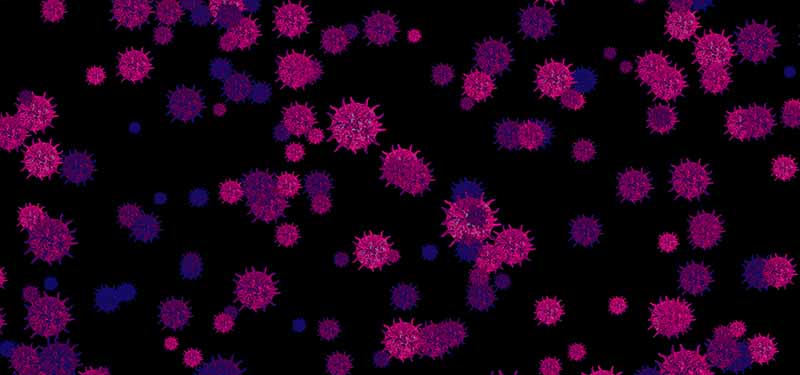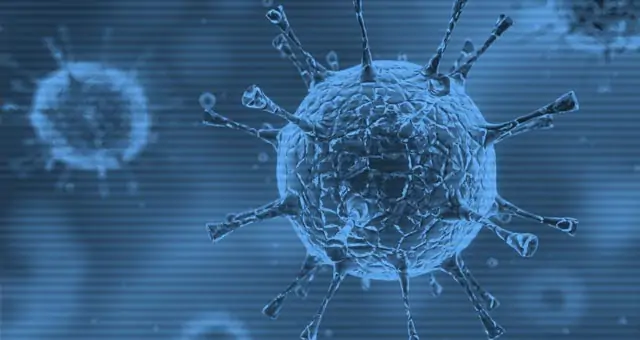The Fast Transmission of the Delta Variant
July 23, 2021

The Delta variant of SARS-CoV-2 (the virus that causes COVID-19) has rapidly become the dominant strain of the virus since Delta first appeared in late 2020. Why? The Delta variant could be at least twice as transmissible as the original SARS-CoV-2 strain. According to researchers, people infected with the Delta variant produce much more of the virus—have a greater viral load—than the original strain. Indeed, a recent study indicated that people infected with the Delta variant had “viral loads up to 1,260 times higher.” Moreover, the Delta variant has a shorter incubation time after exposure—four days versus and average of six days. Put another way, “people who are infected with Delta have—on average—about 1,000 times more copies of the virus in their respiratory tracts than those infected with the original strain, and are infectious earlier in the course of their illness.” (Source)
What is a SARS-CoV-2 variant?
As viruses continue to replicate, the chance for mutations increase which leads to variants. As explained by the Centers for Disease Control and Prevention (CDC): “Viruses constantly change through mutation, and new variants of a virus are expected to occur. Sometimes new variants emerge and disappear. Other times, new variants persist. Multiple variants of the virus that causes COVID-19 have been documented in the United States and globally during this pandemic.” Before the rise of Delta, you may recall having heard of the B.1.17 variant (more informally known as the UK variant). Another new variant, the Lambda variant, is currently on the rise in South America but for the U.S., for now, the Delta variant is of most concern.
How bad is the Delta variant?
According to new projections released this week from the COVID-19 Scenario Modeling Hub, an alliance of researchers working in consultation with academic modeling teams and government agencies (e.g., CDC), the “current COVID-19 surge in the U.S. — fueled by the highly contagious Delta variant — will steadily accelerate through the summer and fall, peaking in mid-October, with daily deaths more than triple what they are now.” (Source)
How is the Delta variant spread?
The Delta variant spreads the same way as the original SARS-CoV-2 virus: respiratory transmission. As described in a recent news report by NPR, detailed contact tracing helped researchers determine that “the primary way the virus spreads remains being indoors with someone who is infected and breathing in their droplets or aerosols. With Delta, the difference is that the infected person will make many more copies of the virus, faster, which makes it easier to spread.”
How can transmission of the Delta variant be prevented?
Currently available COVID-19 vaccines (e.g., Moderna, Pfizer) appear to be effective against the Delta variant, but caution in preventing transmission is still needed as “breakthrough” infections are being widely reported. The good news is, as the New York Times reports, infections in the vaccinated “are still relatively uncommon…and those that cause serious illness, hospitalization or death even more so. More than 97 percent of people hospitalized for COVID-19 are unvaccinated.” As noted by the World Health Organization (WHO), the vaccines are effective particularly in reducing severity of the virus. Nevertheless, even those with mild cases because they’ve been vaccinated can still transmit it to others, where the level of severity may be much different, including to children or the immunocompromised who cannot be vaccinated. Because the Delta variant spreads the same was as the original SARS-CoV-2 virus—primarily indoors through droplets or aerosols—taking the same precautions makes sense. And, because the COVID-19 virus can linger in the air for hours (e.g., per one study, the virus was still alive in aerosols after 16 hours), disinfecting the air makes sense. Both the CDC and the American Society of Heating, Refrigerating and Air-Conditioning Engineers (ASHRAE) have recommended using ultraviolet germicidal irradiation (UVGI or UV) to help inactivate SARS-CoV-2. Aerapy UV has been independently tested against the original SARS-CoV-2 virus and achieved a 99.97% reduction of the virus in the air, in one air pass.
For more information on Aerapy UV and how we can help you create healthier indoor environments, contact us today.
HOW PROTECTED ARE YOU?
Aerapy's commercial-grade UV lights protect your clients, staff, and your business with proven UV disinfection technology. Contact us for more information.
Please send me more information.

The Fast Transmission of the Delta Variant
July 23, 2021

The Delta variant of SARS-CoV-2 (the virus that causes COVID-19) has rapidly become the dominant strain of the virus since Delta first appeared in late 2020. Why? The Delta variant could be at least twice as transmissible as the original SARS-CoV-2 strain. According to researchers, people infected with the Delta variant produce much more of the virus—have a greater viral load—than the original strain. Indeed, a recent study indicated that people infected with the Delta variant had “viral loads up to 1,260 times higher.” Moreover, the Delta variant has a shorter incubation time after exposure—four days versus and average of six days. Put another way, “people who are infected with Delta have—on average—about 1,000 times more copies of the virus in their respiratory tracts than those infected with the original strain, and are infectious earlier in the course of their illness.” (Source)
What is a SARS-CoV-2 variant?
As viruses continue to replicate, the chance for mutations increase which leads to variants. As explained by the Centers for Disease Control and Prevention (CDC): “Viruses constantly change through mutation, and new variants of a virus are expected to occur. Sometimes new variants emerge and disappear. Other times, new variants persist. Multiple variants of the virus that causes COVID-19 have been documented in the United States and globally during this pandemic.” Before the rise of Delta, you may recall having heard of the B.1.17 variant (more informally known as the UK variant). Another new variant, the Lambda variant, is currently on the rise in South America but for the U.S., for now, the Delta variant is of most concern.
How bad is the Delta variant?
According to new projections released this week from the COVID-19 Scenario Modeling Hub, an alliance of researchers working in consultation with academic modeling teams and government agencies (e.g., CDC), the “current COVID-19 surge in the U.S. — fueled by the highly contagious Delta variant — will steadily accelerate through the summer and fall, peaking in mid-October, with daily deaths more than triple what they are now.” (Source)
How is the Delta variant spread?
The Delta variant spreads the same way as the original SARS-CoV-2 virus: respiratory transmission. As described in a recent news report by NPR, detailed contact tracing helped researchers determine that “the primary way the virus spreads remains being indoors with someone who is infected and breathing in their droplets or aerosols. With Delta, the difference is that the infected person will make many more copies of the virus, faster, which makes it easier to spread.”
How can transmission of the Delta variant be prevented?
Currently available COVID-19 vaccines (e.g., Moderna, Pfizer) appear to be effective against the Delta variant, but caution in preventing transmission is still needed as “breakthrough” infections are being widely reported. The good news is, as the New York Times reports, infections in the vaccinated “are still relatively uncommon…and those that cause serious illness, hospitalization or death even more so. More than 97 percent of people hospitalized for COVID-19 are unvaccinated.” As noted by the World Health Organization (WHO), the vaccines are effective particularly in reducing severity of the virus. Nevertheless, even those with mild cases because they’ve been vaccinated can still transmit it to others, where the level of severity may be much different, including to children or the immunocompromised who cannot be vaccinated. Because the Delta variant spreads the same was as the original SARS-CoV-2 virus—primarily indoors through droplets or aerosols—taking the same precautions makes sense. And, because the COVID-19 virus can linger in the air for hours (e.g., per one study, the virus was still alive in aerosols after 16 hours), disinfecting the air makes sense. Both the CDC and the American Society of Heating, Refrigerating and Air-Conditioning Engineers (ASHRAE) have recommended using ultraviolet germicidal irradiation (UVGI or UV) to help inactivate SARS-CoV-2. Aerapy UV has been independently tested against the original SARS-CoV-2 virus and achieved a 99.97% reduction of the virus in the air, in one air pass.
For more information on Aerapy UV and how we can help you create healthier indoor environments, contact us today.
HOW PROTECTED ARE YOU?
Aerapy's commercial-grade UV lights protect your clients, staff, and your business with proven UV disinfection technology. Contact us for more information.
Please send me more information.

